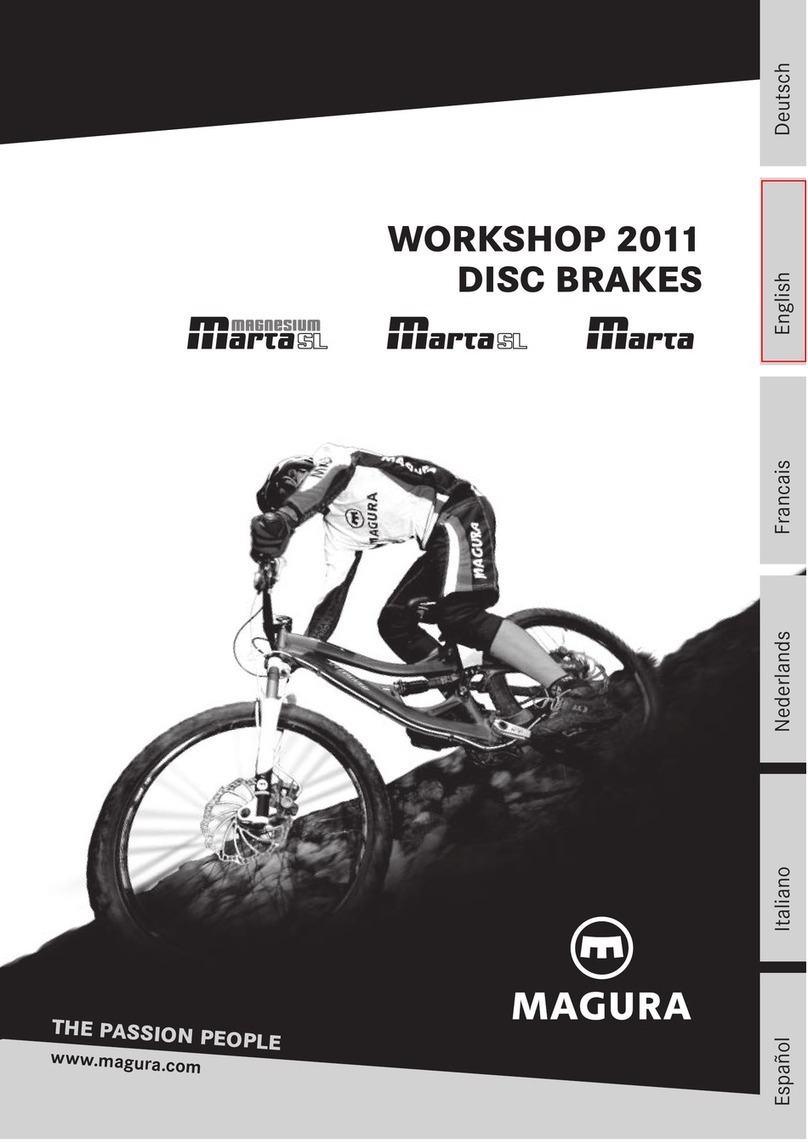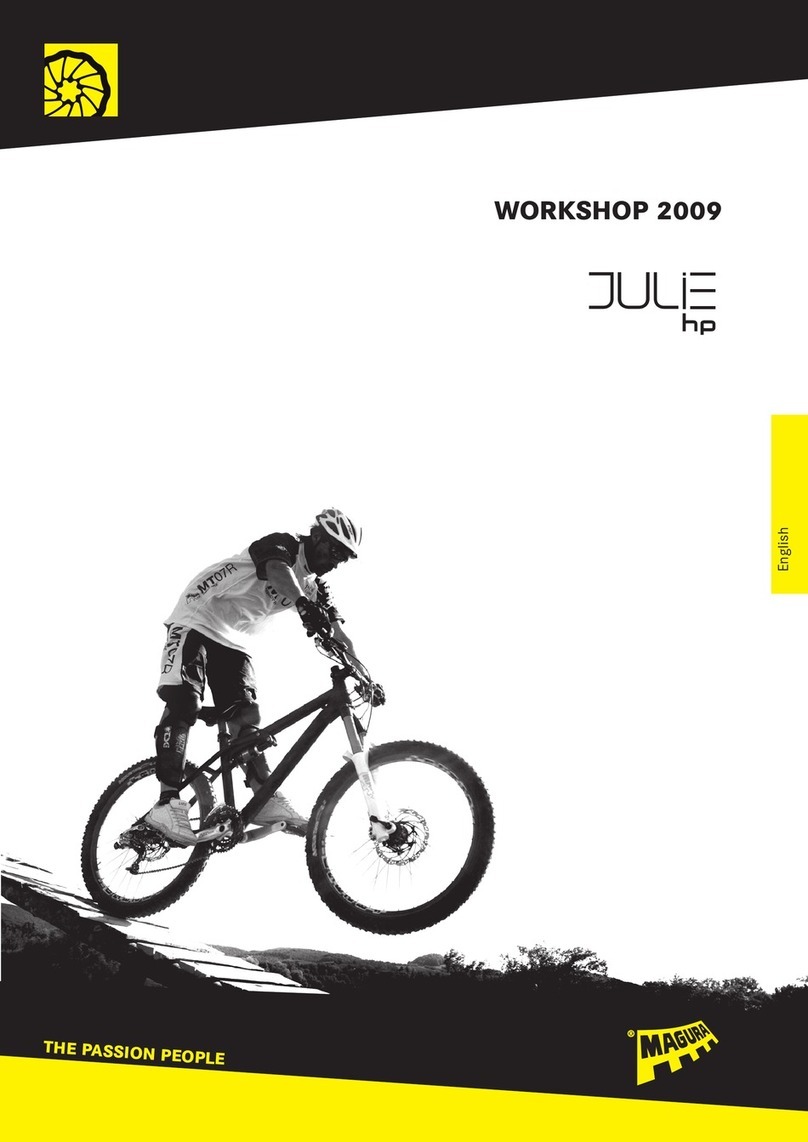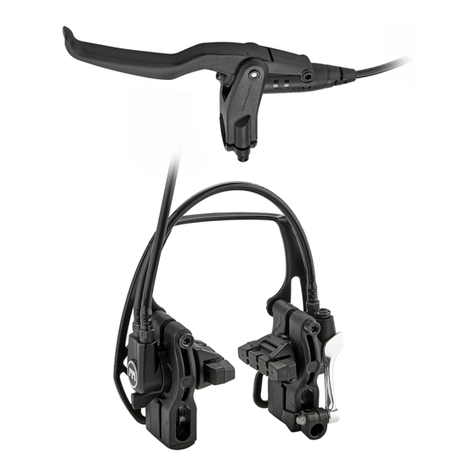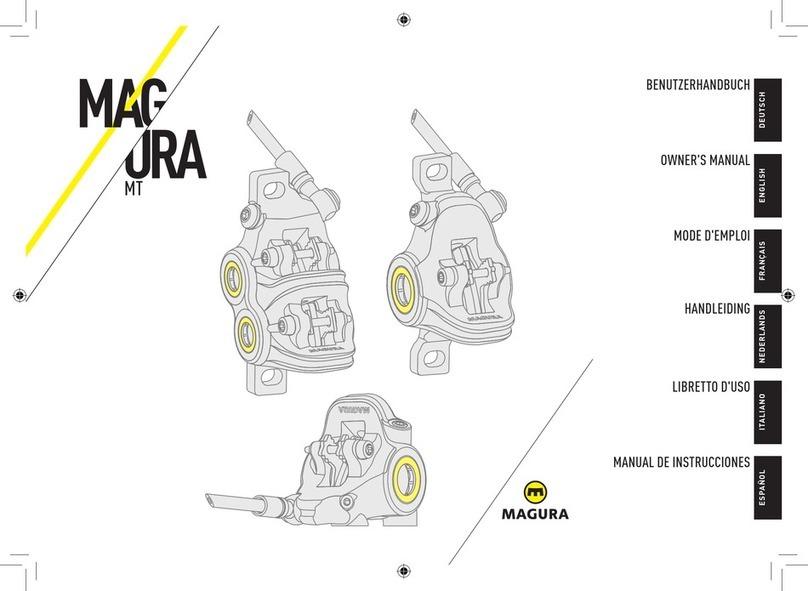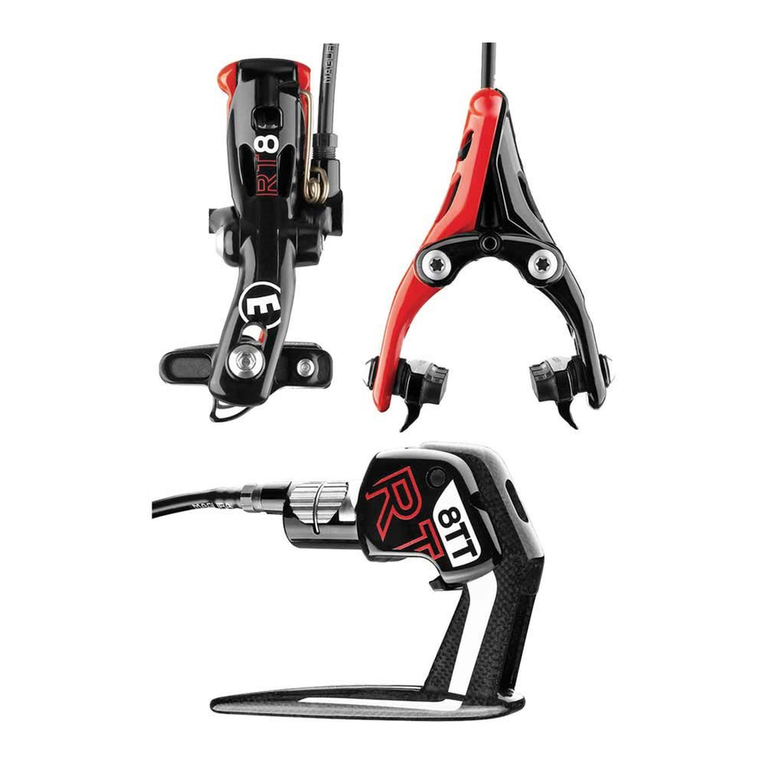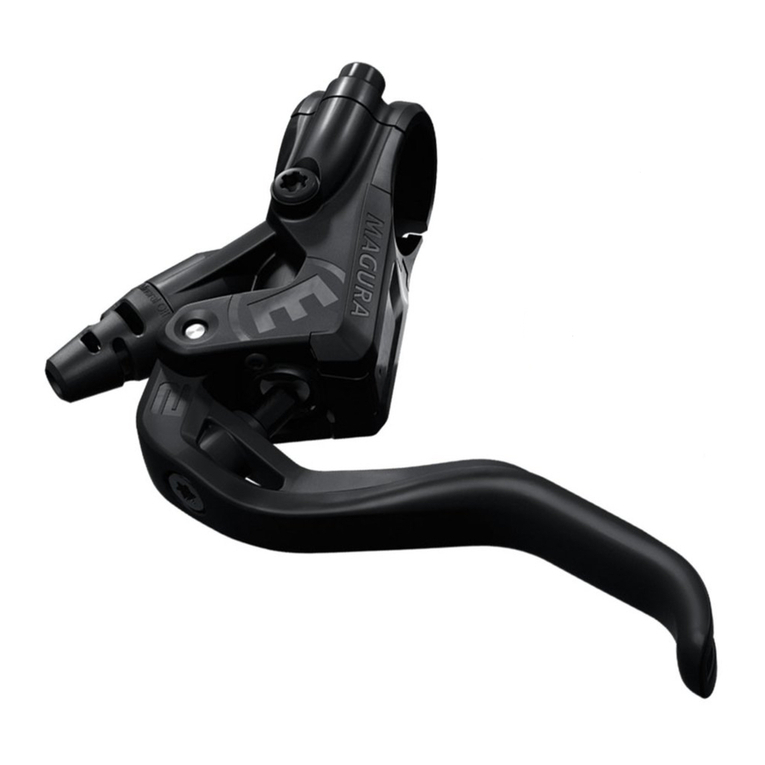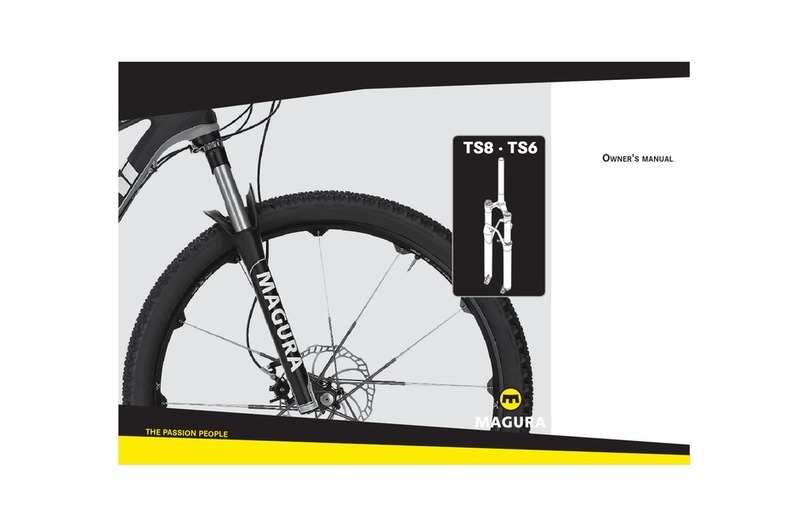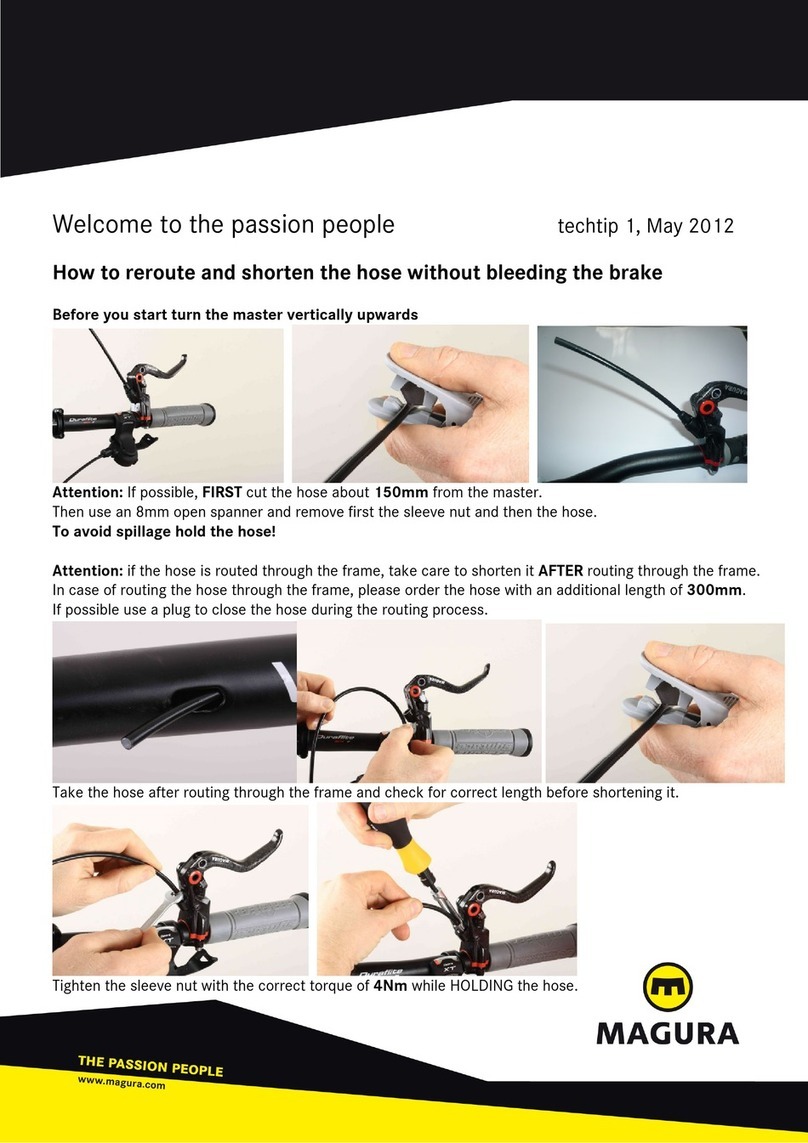www.magura.com
3
1. Welcome to the Passion People!
On the fully hydraulic MAGURA disc brake system Julie the braking force is trans-
mitted to the braking surface by a mineral oil column. The movement of the lever blade
moves a piston, which is integrated in the brake lever (master cylinder). The piston pus-
hes the mineral oil column through the brake hose in the direction of the brake calliper,
where two pistons, on which the brake pads are fixed, are pushed out. The friction bet-
ween the brake pads and the rotor slows down the bicycle and causes both the rotor
and the brake calliper to heat up.
Never touch either the rotor or the brake calliper after long braking as this
may cause serious burns.
You will be pleased to find out that the MAGURA Julie disc brakes offer a superior
braking power even with little hand force applied, no matter what the weather conditions
should be. Particularly in wet weather conditions disc brakes are much more responsive
than rim brakes and transmit their enormous power immediately after activating the
brake lever.
Disc brakes dont’t wear your rims down. However, if they have been mounted incorrect-
ly, they might cause a squealing noise during braking, mainly during wet weather conditi-
ons.
This manual contains important information about the safe installation,
operation and maintenance of your MAGURA disc brake. We urge you to read
it carefully, become familiar with its contents and follow our recommendations
to help make your new braking experience enjoyable and trouble free.
Although the Julie disc brake system is relatively simple you should not
overestimate your technical skills! We therefore advise you to leave the follo-
wing operations to a trained technician of a professional bike shop.
Should there be any further questions or problems we warmly recommend that you
visit our website www.magura.com where you will always find the newest and hottest
tips about all our products. On magura.com you can also download this manual in a
convenient A4 format. Stay tuned with the Passion People!
Thank you for your confidence in our products, enjoy your ride and your
new MAGURA disc stoppers!
Happy trails!
Español Italiano Nederlands Français English Deutsch
Brake lever (master cylinder)
MAGURA Julie
Brake calliper and rotor
MAGURA Julie
Congratulations! You have purchased a
fully hydraulic MAGURA disc brake proud-
ly „Made in Germany“. You will be amazed
at the awesome braking power and the
minimum amount of maintenance that is
necessary on our stoppers. Good to
know that you are not alone, millions of
riders worldwide rely on them and every
day our numbers are increasing.
